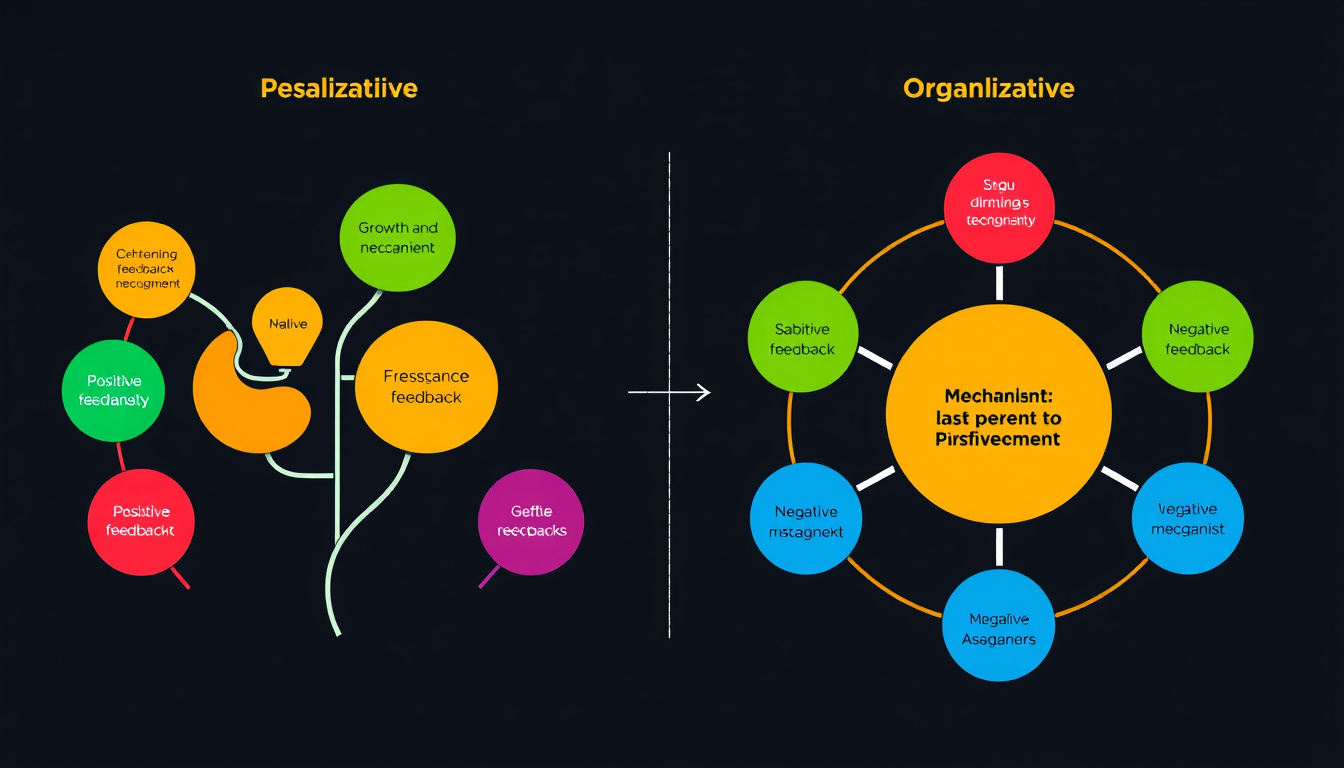Feedback mechanisms are essential systems utilized in both biological processes and societal organizations to maintain equilibrium, promote growth, and enhance performance. Understanding the types of feedback mechanisms — primarily positive and negative — can unlock pathways to significant personal and professional development.
Understanding Feedback Mechanisms
A feedback mechanism is a process through which information about the outcome of an action is communicated, allowing for modifications and adjustments to be made. This concept is crucial not only in biological systems, where it maintains homeostasis, but also in organizational contexts, where it fosters continuous improvement and informs decision-making.

Types of Feedback Mechanisms
Feedback mechanisms are generally classified into two categories:
-
Positive Feedback Mechanisms: These mechanisms amplify changes or deviations from a set point. In biological terms, a positive feedback loop intensifies a response, propelling a system away from its initial state. Common examples include:
- Childbirth: Contractions trigger the release of oxytocin, which further stimulates contractions until delivery.
- Fruit Ripening: The initial ripening of one fruit releases ethylene, accelerating the ripening of nearby fruits.
- Blood Clotting: When a blood vessel is damaged, platelets adhere to the site and release chemicals that attract even more platelets, rapidly forming a clot.
-
Negative Feedback Mechanisms: Contrarily, negative feedback mechanisms work to counteract deviations, promoting stability within a system. These processes are vital for maintaining homeostasis in living organisms. Key examples include:
- Temperature Regulation: When body temperature rises, mechanisms like sweating and vasodilation are activated to cool the body down.
- Blood Pressure Regulation: The body adjusts heart rate based on blood pressure readings, increasing or decreasing heart function as necessary.
- Osmoregulation: This process helps to balance salt concentrations in organisms like fish, ensuring that water and salt levels remain stable.
The Importance of Feedback Mechanisms
Feedback mechanisms are not limited to biological systems; they play a critical role in organizational settings. For example, in the workplace, effective feedback mechanisms include:
- Performance Reviews: These evaluations gauge employee performance against set objectives. Constructive feedback provided during these reviews can highlight areas for professional growth.
- Employee Surveys: Feedback collected through anonymous surveys provides insights into employee sentiments regarding workplace conditions and culture. It enables organizations to identify problems that need addressing.
- Open-Door Policies: Encouraging direct communication fosters an environment of trust and accountability, allowing for rapid resolution of issues.
Impact on Personal and Professional Growth
For individuals seeking personal development, feedback mechanisms serve to guide decision-making and encourage self-reflection. By understanding how to solicit and respond to feedback, individuals can develop their skills more effectively. Constructive criticism redirects effort where it’s needed, while positive feedback can reinforce effective practices and behaviors.
In professional settings, organizations that effectively implement feedback systems tend to see enhanced employee satisfaction and productivity. Regular feedback loops cultivate an environment where continuous learning and improvement are prioritized.
Conclusion
Feedback mechanisms, whether operating at a biological level or within organizational frameworks, are crucial for effective performance and growth. By recognizing and leveraging both positive and negative feedback, individuals and organizations can achieve greater levels of stability, performance, and overall satisfaction. A commitment to establishing robust feedback systems can facilitate ongoing development, ensuring that both personal and professional journeys flow smoothly toward achieving success.



